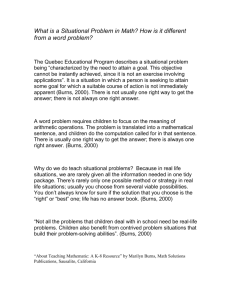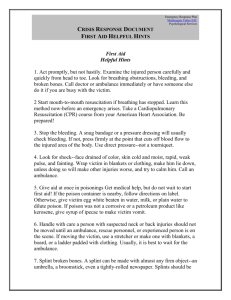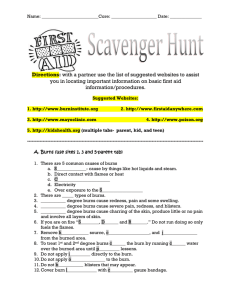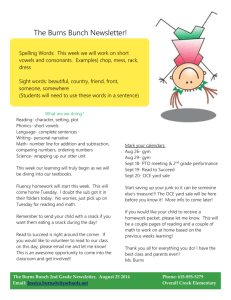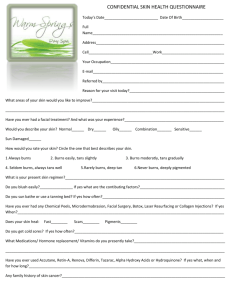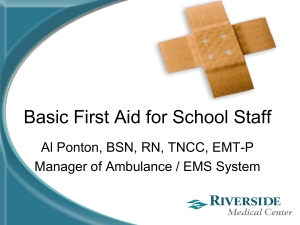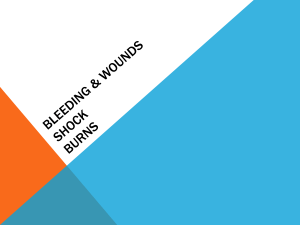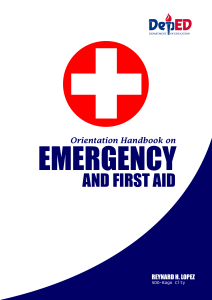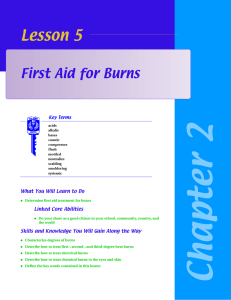4. Emergency Procedures 4.1 First Aid
advertisement
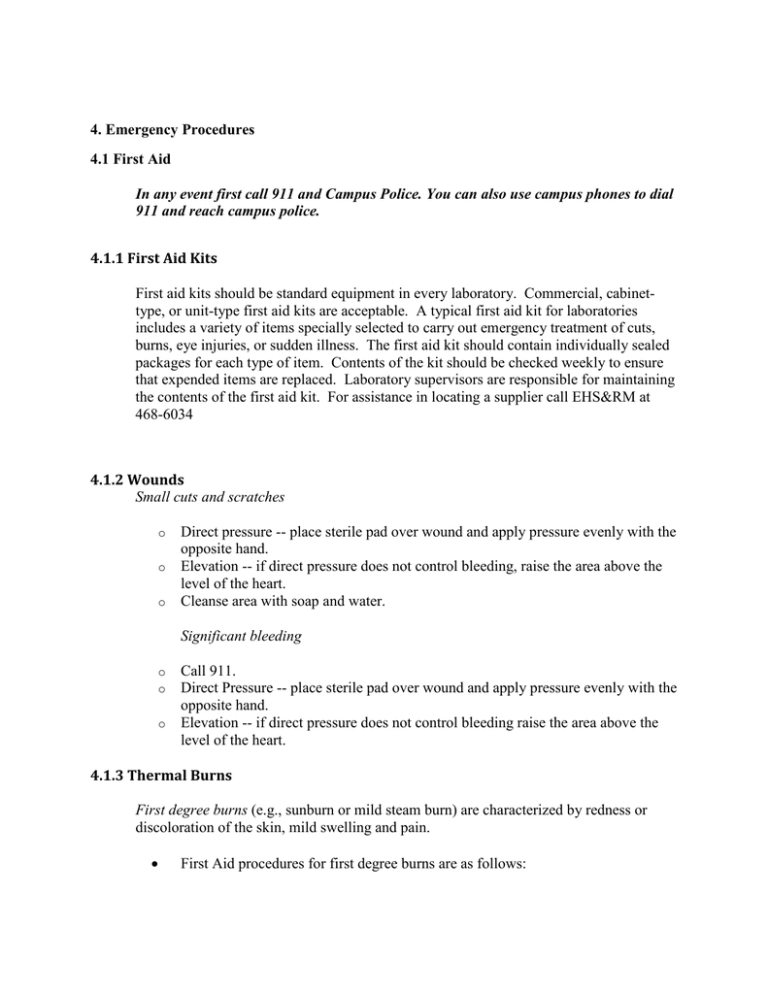
4. Emergency Procedures 4.1 First Aid In any event first call 911 and Campus Police. You can also use campus phones to dial 911 and reach campus police. 4.1.1 First Aid Kits First aid kits should be standard equipment in every laboratory. Commercial, cabinettype, or unit-type first aid kits are acceptable. A typical first aid kit for laboratories includes a variety of items specially selected to carry out emergency treatment of cuts, burns, eye injuries, or sudden illness. The first aid kit should contain individually sealed packages for each type of item. Contents of the kit should be checked weekly to ensure that expended items are replaced. Laboratory supervisors are responsible for maintaining the contents of the first aid kit. For assistance in locating a supplier call EHS&RM at 468-6034 4.1.2 Wounds Small cuts and scratches o o o Direct pressure -- place sterile pad over wound and apply pressure evenly with the opposite hand. Elevation -- if direct pressure does not control bleeding, raise the area above the level of the heart. Cleanse area with soap and water. Significant bleeding o o o Call 911. Direct Pressure -- place sterile pad over wound and apply pressure evenly with the opposite hand. Elevation -- if direct pressure does not control bleeding raise the area above the level of the heart. 4.1.3 Thermal Burns First degree burns (e.g., sunburn or mild steam burn) are characterized by redness or discoloration of the skin, mild swelling and pain. • First Aid procedures for first degree burns are as follows: o o Apply cold water applications and/or immerse in cold water for at least 10 minutes. Seek further medical treatment as needed. Second and third degree burns are characterized by red or mottled skin with blisters (second degree), white or charred skin (third degree). • First aid procedures for second and third degree burns are as follows: o Call 911. 4.1.4 Chemical Burns If hazardous chemicals should come into contact with the skin or eyes, follow the first aid procedures below. • Skin: o o o o o • Remove victim's clothes -- don't let modesty stand in the way. Remove victim's shoes -- chemicals may also collect here. Rinse the area with large quantities of water for at least 15 minutes (sink, shower, or hose). Do Not apply burn ointments/spray to affected areas. Call Emergency Rescue (911) without delay. Eyes: (acid/alkali, e.g., HCl, NaOH) o Call 911 without delay and follow the instructions given in eye wash station. 4.1.5 Ingestion of Chemicals • • • Call 911 Immediately. Call the University Health Center for advice on appropriate actions to be taken while awaiting emergency medical assistance. If the victim is unconscious, turn their head or entire body onto their left side. Be prepared to start CPR if you are properly trained, but be cautious about exposing yourself to chemical poisoning via mouth-to-mouth resuscitation. If available, use a mouth to mouth resuscitator. 4.1.6 Inhalation of Chemicals • • • • Evacuate the area and move the victim into fresh air. Call 911 without delay. If the victim is not breathing and you are properly trained, perform CPR until the rescue squad arrives. Be careful to avoid exposure to chemical poisoning via mouth-to-mouth resuscitation. Use a mouth-to-mask resuscitator. Treat for chemical burns of the eyes and skin as noted above
